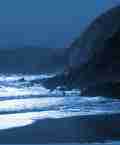 |
 | |||
|
The Easter Rising 1916 On 24 April 1916, Patrick Pearse stood outside the General Post Office in Dublin and read a proclamation announcing the establishment of an Irish republic under a provisional government. Among the seven signatories of the proclamation was James Connolly, head of the para-military Irish Citizen Army, who had earlier led a successful occupation of the building. Elsewhere in Dublin, armed men had taken over key points such as the Four Courts, the College of Surgeons overlooking St Stephen's Green, and Boland's Mills. It was Easter Monday, and there were few people in the centre of Dublin to witness the rising. Many army officers had gone to the Fairyhouse races. Almost all the revolutionary leaders were members of the secret Irish Republican Brotherhood. The outbreak of war had persuaded them that in England's difficulties lay Ireland's opportunity. As earlier rebels had looked to France for help, they now turned to Germany, which promised to send arms. In addition to the small Irish Citizen Army, formed in 1913 to defend workers against police harassment, there were thousands of Irish Volunteers, a body formed in response to the Ulster Volunteer Force. Like the UVF, the Volunteers carried out a successful gun-running exploit, landing arms at Howth, near Dublin, a few days before war was declared.
The Volunteers had been infiltrated by members of the IRB, which had secretly fixed Easter Sunday as the date for the rising. The Volunteers' leader, Eoin MacNeill, only discovered the plan on 20 April. Two days later, he learned that a German ship bringing arms had been scuttled. Realising that a rising was doomed to failure, he cancelled all Volunteer manoeuvres. Despite this setback, and knowing that their forces would be limited to a modest number of Dublin Volunteers as well as the ICA, Pearse and Connolly decided that a rising must take place, if only as a 'blood sacrifice' to arouse the Irish people.
From the Appletree Press title: A Little History of Ireland, click here for more information or here to buy the book from Amazon. Also from Appletree: A Short History of Ireland, available from Amazon.com. Click here for more information. |
[ Back to Top ]
All Material © 1999-2005 Irelandseye.com and contributors
